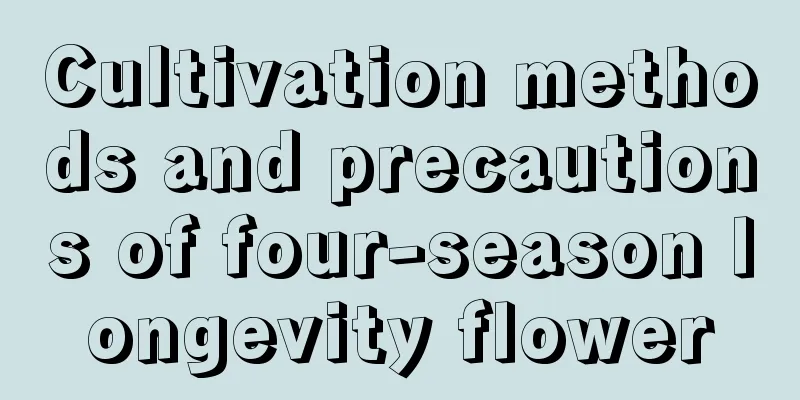How to care for and water mint?

|
Mint is a popular herb that is not only practical but can also be used in cooking, making tea, making desserts, and even as medicine. There are three main ways to propagate mint: sowing, division and cutting, all of which are very simple and have a high success rate. Let’s learn how to care for and water mint. 1. Breeding Methods 1. Seeding method Mint can be propagated by seeds, but the sowing cycle is long, so asexual reproduction is the main method in life. In spring and autumn, temperatures over 20 degrees are most suitable for seed germination. Because mint seeds are small, in order to ensure smooth germination, loose and breathable soil is needed and covered with a thin layer of soil. The soil should be watered thoroughly before sowing, or watered with a watering can after sowing the seeds. Then place it in a diffuse light environment, and gradually increase the light after seedlings grow. 2. Cutting method Select some mint branches, cut them into 5-10 cm lengths, keep a few leaves on the top, and remove the rest. Dip the branches in some rooting powder and insert them into moist sandy soil, or put them in a cup of water for hydroponics. Then place it in a shaded place with scattered light. If the temperature is suitable, it will grow roots in 3-5 days. 3. Division method Division propagation is suitable for repotting in spring and autumn. After digging the mint out from the roots, remove the soil at the roots, remove the aging rhizomes, select the thick rhizomes with more buds, and plant them in new potting soil to turn one pot into multiple pots. After division, place the mint in a cool and ventilated place for a week to grow slowly, and then move it to the sun for normal maintenance. 2. Daily maintenance 1. Lighting Mint loves sunlight very much. Only by getting more sunlight can it keep its leaves green and have a strong fragrance. When there is insufficient light, mint will grow thin and easily fall over. Therefore, when growing mint, you must choose a place with plenty of sunlight for it so that it can withstand even the summer sun. If you are worried about the leaves being burned by excessive exposure to the sun, you can provide appropriate shade during the midsummer afternoon to prevent the leaves from losing water too quickly. 2. Watering The principle of watering potted mint is to water thoroughly when the soil is dry. There are two ways to water thoroughly: one is the immersion method, which is to immerse the mint pot directly in water; the other is to water it repeatedly, such as watering it three times in a row, each time until water flows out from the bottom of the pot, so as to ensure that it is completely watered. When the climate is dry, you also need to spray water on the leaves and around them frequently to ensure a certain level of environmental humidity. 3. Fertilization Although mint does not have a high demand for fertilizer, providing it with sufficient nutrients will help it grow luxuriantly and fill the pot. It is recommended to add an appropriate amount of decomposed organic fertilizer or slow-release fertilizer as base fertilizer when repotting, and apply thin liquid fertilizer once a month during the growing season, mainly nitrogen fertilizer, with an appropriate amount of phosphorus and potassium fertilizer. After harvesting branches and leaves during the growing period, top dressing should be done after harvesting to promote the plant's recovery. 4. Pruning Pruning is the ultimate secret to a blooming pot. When caring for mint, it is important to top the plant regularly, both to ensure even growth of the plant and to encourage more side branches to sprout. When pinching the top, count 2-3 layers of leaves from the top and trim at the thickest part of the stem. If the plant grows too tall or has an ugly shape, you can choose to shave it, leaving 1-2 leaves on each branch and cutting off the rest to let it sprout again. Don’t rush to throw away the cut branches and twigs. The tender ones can be used to make tea or desserts, while the stronger ones can be used for cuttings, so nothing is wasted. Do you understand now how to grow a lush mint pot? If you have any other maintenance questions, you can also leave a message.
|
<<: The latest time to transplant onion seedlings
>>: In which month are gourds ripe for picking?
Recommend
Why do rose leaves dry up and turn yellow?
1. Reasons 1. Excessive watering: The yellowing a...
How to judge whether Clivia should be watered
1. Listen to the sound This is a method often use...
How to grow lucky clover
1. Soil The growth of lucky clover requires ferti...
How to grow papaya in a balcony pot
Growth environment First, choose a flowerpot with...
How often should I water the loofah? The correct way to water it
Introduction to loofah Luffa likes a moist enviro...
What are the cultivation methods and precautions of hydrangea
Hydrangea cultivation method Hydrangea is a plant...
When and how to change the soil of Tiger Tail Orchid
Time to change the soil of Tiger Tail Orchid The ...
What should I do if Qiuli grows too tall?
What does Qiuli look like? When the Autumn Lily i...
How to grow orchids and what kind of soil do they need?
1. How to plant 1. Sowing: Generally, it is chose...
Can the lucky bamboo be watered with beer?
1. Can be poured The lucky bamboo can be watered ...
When to plant garlic
1. When to plant The planting time will vary depe...
What to do with dried leaves of Begonia
Too much watering Although it likes moisture, you...
Cultivation method of horn-stem wild peony
1. Soil The cultivation of horn-stem wild peony i...
How to divide Zibao
The first step of Zibao division: break off the s...
What flowers are suitable for growing in Zhangjiakou? What are the city flowers and trees?
1. Climate characteristics of Zhangjiakou Zhangji...









